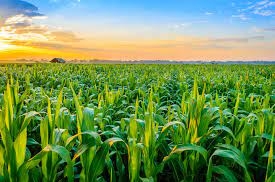In 2023, the EU will reduce the area of corn sowing due to difficult weather and strong competition

Some European analysts believe that EU farmers started planting corn too late in 2023, so the area planted will decrease. The European Commission predicts that 8.52 million hectares will be sown with corn, which will be 330,000 hectares less than the 2022 figure and 725,000 hectares less than the 2021 level. Germany, France, Italy, Bulgaria, Poland and Romania will reduce the area under corn the most.
However, in case of favorable weather, the corn harvest may be larger than in the dry 2022. Last year, corn crops in the EU almost dried up in the fields, so the harvest became the smallest since 2007.
Another reason for the decrease in the area under corn is the expansion of the areas sown with rapeseed and winter cereals. In addition, European farmers rely on drought-resistant crops, such as sunflowers, or highly profitable ones, such as soybeans. In countries bordering Ukraine, farmers also take into account the factor of significant competition with cheap Ukrainian grain.
However, the determining factor remains the weather. Most EU countries suffer from a moisture deficit, especially Spain, Italy, France, Bulgaria, Romania and Hungary, and only Germany has an excess of precipitation. In Portugal and Spain, corn is grown mainly under irrigation conditions, so the distribution of water will determine the final sowing areas.
In the case of sufficient moisture, analysts hope for the recovery of corn production to the level of 65.3 million tons, which will exceed last year's harvest by 25% or 13 million tons, but will be 8.2 million tons less than in 2021. It is expected that the corn harvest in Germany will grow from 3.8 million tons in 2022 to 4.2 million tons in 2023. According to the forecast of the European Commission, compared to the non-harvesting year of 2022, corn production will increase the most in Slovakia, Romania and Hungary.
At the same time, a significant reduction in the number of livestock in the EU, outbreaks of bird flu and high inflation reduce the consumption of meat and dairy products, which means the need for animal feed, in particular corn.
Due to the high prices of corn in the EU, wheat and barley are increasingly being replaced in feed recipes, especially in countries that harvested a low harvest last year. Therefore, France, Italy, Romania, Hungary and Germany will significantly reduce the use of corn in feed.
According to FranceAgriMe monitoring data, as of April 17, 20% of the planned area (+8% for the week) was sown with corn in France, compared to 29% last year.
On the Euronext exchange, corn for delivery in November is trading at €236.5/t, which is 33% lower than a year ago. However, the cost of nitrogen fertilizers is significantly higher than last year's level, which will also contribute to the reduction of corn sowing areas in the EU and in Ukraine.


